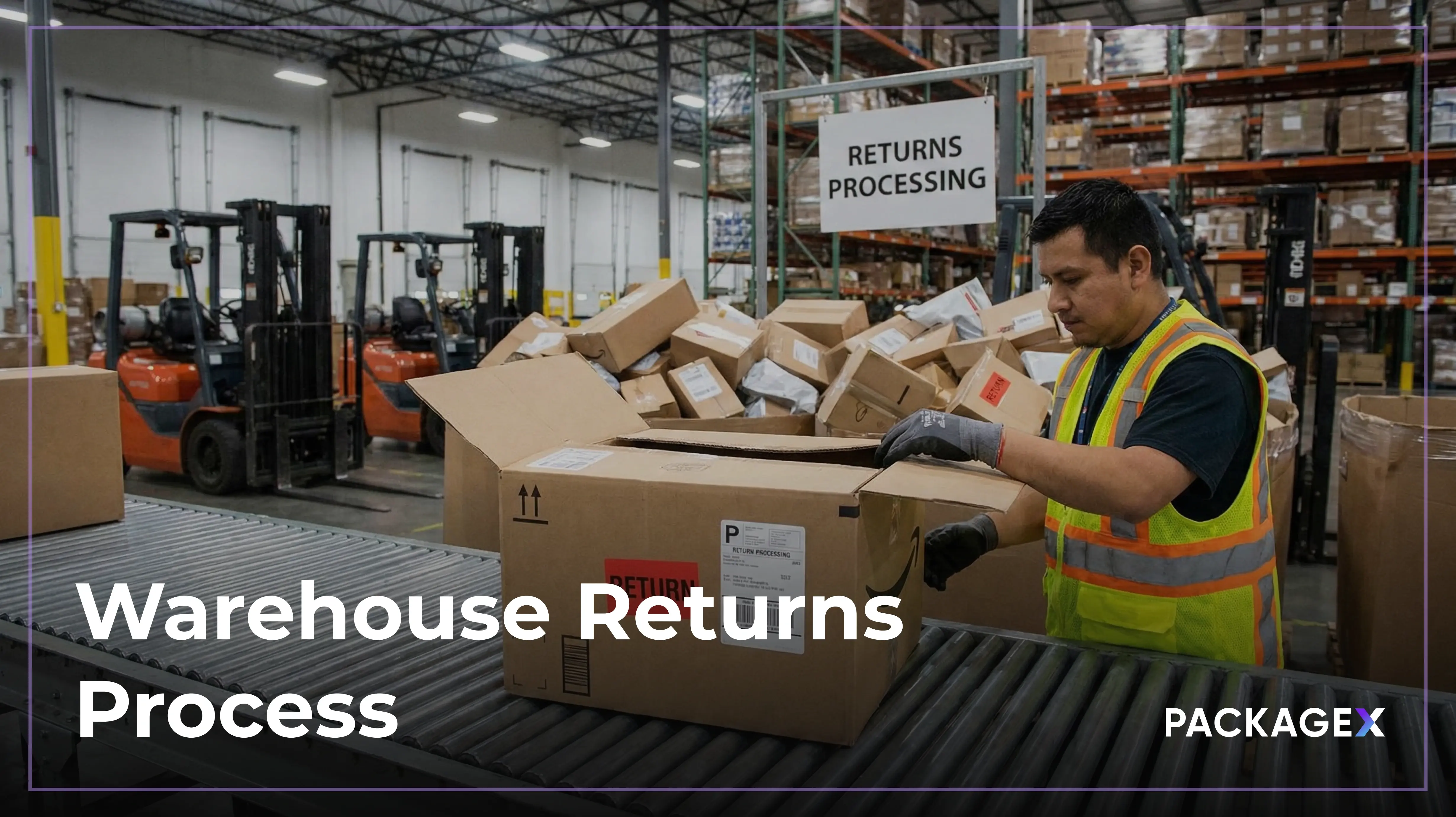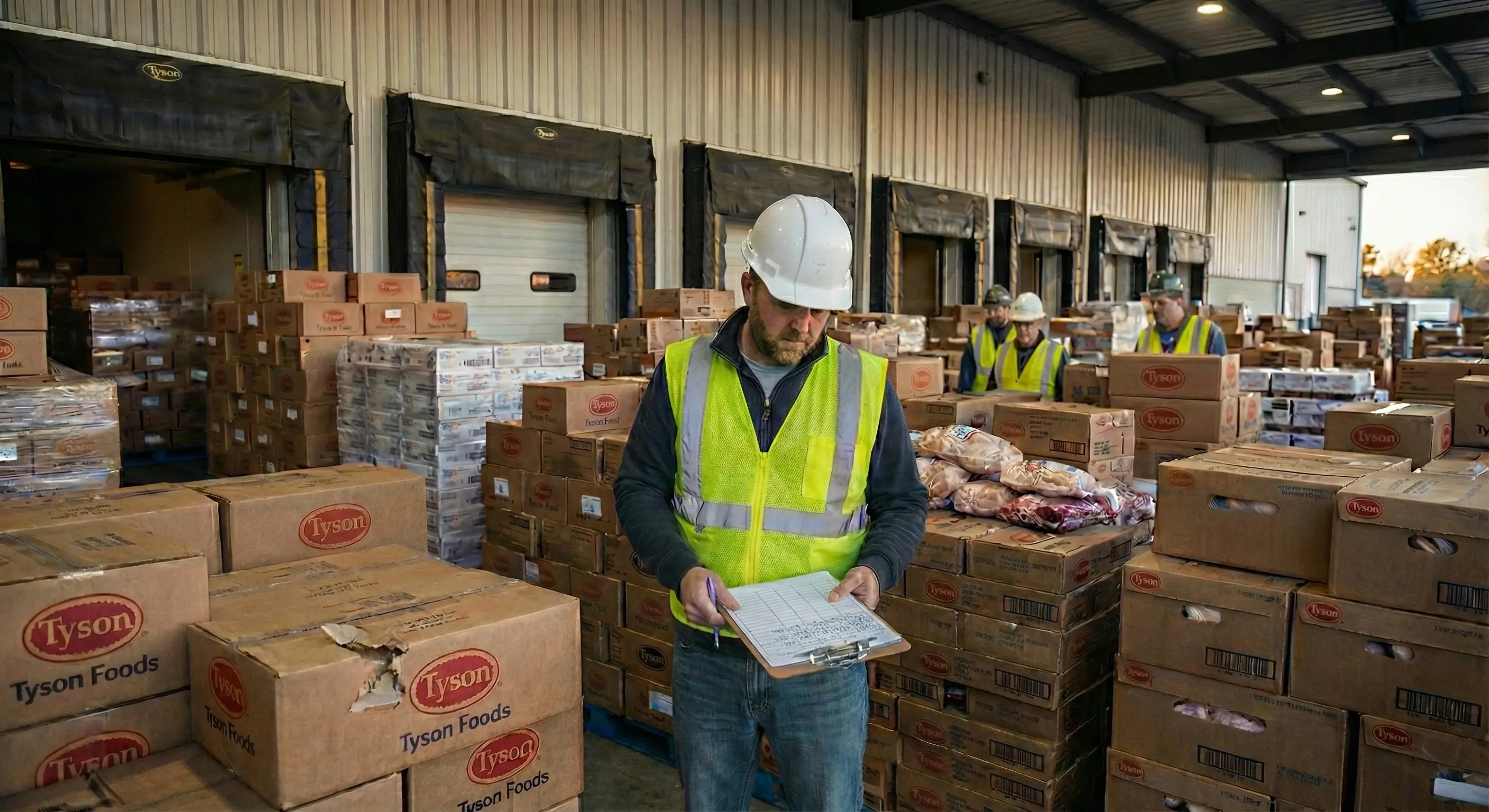Order picking is a critical part of the order fulfillment process, where items are retrieved from warehouse inventory to complete customer orders. Errors in this process can lead to returns, refunds, and a decline in customer satisfaction. Businesses need to implement effective order-picking systems to avoid such issues and streamline operations.
While it may seem like a simple task, studies reveal that order-picking can account for up to 63% of warehouse operating costs, making it the most expensive warehouse function. So, keeping the order-picking process efficient minimizes costs and maintains smooth order fulfillment, from picking to packing and shipping. Various systems exist to improve the order-picking process, each designed to suit different business needs and improve warehouse productivity.
What is order picking?
Order picking (or ‘warehouse picking’) is an extremely important step in order fulfillment. It involves retrieving items from a warehouse to fulfill customer requests. Order pickers are responsible for selecting and assembling the required products to complete each order.
This process has to be completed as fast and as accurately as possible. The time taken directly affects shipment schedules. Order-picking efficiency leads to customer satisfaction, as delays or mistakes can lead to dissatisfaction. To optimize this process, forward-thinking businesses are adopting methods to reduce the time and distance pickers spend searching for products.
Importance of Picking Process in Warehouse
What benefits can you reap from focusing on this simple task of your warehousing operations? Let’s explore why the order-picking process is important:
- Exceed Customer Satisfaction: Fast and accurate order picking directly impacts customer satisfaction by ensuring timely deliveries of complete, undamaged products.
- Optimize Warehouse Efficiency: Picking systems that provide optimal routes and item validations improves staff efficiency and reduces mistakes.
- Cost Reduction: Automation and optimized picking routes lower operational costs.
- Improve Performance with a WMS: Warehouse Management Systems (WMS) streamline operations by generating automatic picking lists and grouping nearby orders. This also makes batch-picking and wave-picking possible.
- Tracking Warehouse Productivity: Optimizing order picking speeds up the process, allowing for quicker customer deliveries. It’s essential to monitor warehouse productivity and identify ways to support your pickers. So, track your distribution metrics, including inventory turnover, shipping times, total units in storage, average warehouse capacity usage, and order picking accuracy consistently. Regular assessments and discussions on improving these metrics are crucial for optimizing overall warehouse efficiency.
- Improved Order Accuracy: Reducing errors and missing items leads to more precise order fulfillment, enhancing overall service.
- Enhanced Inventory Management: Efficient picking systems allow for better inventory storage strategy and tracking of warehouse stock.
- Scalability and Flexibility: Modern order picking systems are adaptable, accommodating growing businesses and fluctuating demand.
Types of Order-Picking Systems
An order-picking system refers to the technology and systems employed by operators to enhance the efficiency and accuracy of the picking process.
Single Order Picking
Single-order picking is a warehouse method in which workers manually pick items from open cases to fulfill one customer order at a time. Pickers focus on fulfilling one customer order at a time, moving through the warehouse to gather items. Though this method can be time-consuming, it’s ideal for smaller businesses or warehouses. Its main advantage is the high level of accuracy it delivers, as concentrating on individual orders helps minimize errors.
Batch Picking
Batch picking, also known as multi-order picking, involves grouping multiple orders, usually 8 to 16, into small batches that are fulfilled simultaneously. Order-pullers work from a consolidated pick list, which allows them to efficiently gather items for all orders in the batch at once.
Cluster Picking
Cluster picking is a piece-picking method that allows operators to fulfill multiple orders simultaneously by grouping them into clusters. So, there is no need for repeated trips to the same pick location, as items for several orders are gathered in a single visit. This suits small orders or when picking quantities less than full cases. Vertical lift modules, carousels, or an order picker transports an order-picking cart filled with containers from one location to another.
Wave Picking
Wave picking means grouping orders based on shared logistics criteria and assigning a designated preparation period. This grouping can be based on factors such as end customer, type of carrier, load volume or size, and delivery schedules.
Zone Picking
A picking process where pickers are assigned to retrieve items from specific zones within the warehouse.
Case picking
Case picking selects products in full case or carton quantities from various storage mediums. During case picking, items are generally picked onto a pallet, cart, or conveyor.
Pick-To-Light
It’s an order-picking technology for warehouses and distribution centers that uses lights and LEDs on racks or shelves to highlight pick locations and guide pickers.
Voice Picking
An innovative, hands-free, eyes-free system that employs an intelligent voice agent and advanced speech recognition software to guide pickers to the right place and SKU.
Mobile Scanner Picking
Order pickers can instantly confirm orders and manage pick tasks using a mobile smartphone or scanner. Through automated order verification, there are fewer manual picking errors and higher worker productivity. PackageX’s order-picking software is particularly well-suited for businesses aiming to boost order precision and customer satisfaction.
- Our AI-powered scanning technology is capable of digitizing various data on a package, including handwritten text, barcodes, and QR codes.
- The system facilitates efficient picking and packing processes, including the selection of predefined packages and the addition of items via a mobile scanner.
- Automatically detect which items have been fully picked and which have been partially picked, providing complete visibility into the order status.
Designing Warehouse Picking Systems With Optimum Efficiency
When choosing an order-picking system for your warehouse, consider the size of your warehouse and inventory. Small warehouses may benefit from single-order picking, while larger facilities might opt for zone picking to manage high volumes efficiently. The number of pickers and their roles also influence the choice of system. Analyzing sales data helps match the system to order volume and item quantities. Combining systems, such as zone picking with pick-and-pass methods, can also address diverse needs, while automated order-picking system options like conveyor belts or order-picking robots can further streamline operations. Maintaining and analyzing all this data is how you can improve warehouse picking speed and accuracy.
One of the best things you can do for your warehouse is to implement Warehouse Management Software (WMS). It can auto-generate pick lists and track orders, using appropriate warehouse picking equipment like forklifts and barcode scanners, and continuously optimize warehouse layout and productivity. Tracking metrics such as inventory turnover and order accuracy ensures ongoing improvement. If management is burdened, consider outsourcing fulfillment to third-party logistics (3PL) providers, as they offer expertise in picking, packing, and shipping, so you can shift focus on core operations while reducing costs and errors.
Measuring the Efficiency of Warehouse Order Picking
To gauge warehouse picking efficiency, monitor these key performance indicators (KPIs):
Pick Accuracy: The ratio of correct picks to total orders shipped, calculated as Total Correct Picks ÷ Total Orders Shipped.
Order Cycle Time: Time taken from order receipt to shipment, excluding transit time. Formula: (Delivery Date – Order Date) ÷ Total Orders Shipped.
Units Per Hour (UPH): Units picked per hour, indicating picker productivity. Formula: Number of Units Picked ÷ Hours Worked.
Travel Distance: Measures walking distance for optimizing routes and layout, best assessed with warehouse management systems.
Fill Rate: Percentage of orders fulfilled from available stock. Formula: (Orders Shipped ÷ Total Orders Placed) × 100.
Turnaround Time: Time from order receipt to shipment, is crucial for timely fulfillment. Formula: Time Order Received – Time Order Completed.
{{returns-webinar}}
Optimize Order Picking With PackageX
Now that you realize why efficient order picking is crucial for warehouse operations, you can make better decisions to reduce costs and increase customer satisfaction. Techniques like single-order, batch, and voice-picking can streamline processes and reduce errors. Implementing Warehouse Management Software (WMS) and utilizing KPIs such as pick accuracy and order cycle time can further optimize performance.
How can you simplify tracking these metrics? PackageX Warehouse App can help you assess your efficiency easily through the Performance Metrics Dashboard, which tracks all these KPIs. Continue to enhance your operations with PackageX to maximize the efficiency of your resources.
FAQs
What is the meaning of an order picker?
An order picker locates items on storage shelves or in rooms using barcodes or serial numbers. They must securely shrink-wrap these items before packaging them into envelopes or boxes for safe delivery. They may also operate equipment such as forklifts to load trucks for daily deliveries.
What is an example of order picking?
Here’s an example of an order-picking strategy. A worker may collect all SKUs from Zone 1 into a bin, which is then passed to a worker in Zone 2, and so forth until all items for an order are picked. This method is particularly advantageous for high-volume warehouses with significant traffic across multiple areas.
Is order picking hard?
The role of an order picker is both physically and mentally demanding, yet it offers excellent career prospects. Successful order pickers excel in organizing and arranging products effectively.




